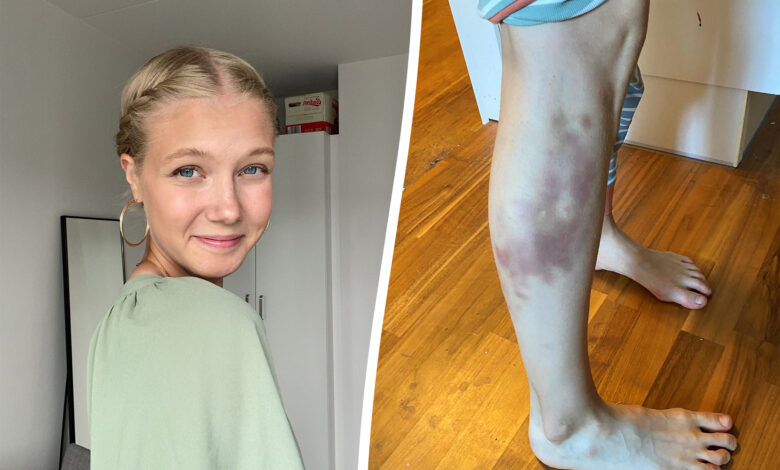Ehlers-Danlos syndromes patient shares how she was diagnosed

As a child, Lina Ahnberg experienced bruises all over her body and severe joint pain.
Things got so bad, Ahnberg says, that teachers suspected child abuse.
But Ahnberg was recently diagnosed with Ehlers-Danlos syndromes (EDS), a group of rare, inherited conditions that cause very flexible joints and stretchy, fragile skin.
“I was relieved to finally have a diagnosis — even though there is no cure,” Ahnberg, 21, told SWNS.
“I found that a lot of doctors didn’t know what EDS is and that if you present a list of symptoms they can be part of a bigger problem,” she added.
The Sweden student said she “can’t remember a time where I haven’t experienced pain.”
She said her bruising, baby-like skin and chronic back pain were long “dismissed” by health professionals as stress.
Nevertheless, the simplest of tasks — like having a conversation or taking a shower — tired Ahnberg so much that she would have to rest.
She also suffered stomach cramps and nausea.
“From an early age, I had bruises on my body to the point that my kindergarten teacher would ask my parents if everything was OK at home,” Ahnberg recalled.
“My stomach issues — pain and constipation — caused me to develop an eating disorder at 8 years old, and I then was diagnosed with anorexia, which nearly took my life,” she continued.
She said her symptoms worsened through her teenage years and new ones formed, including inappropriate sinus tachycardia, which is an abnormally high resting heart rate.
Doctors feared she would never recover from the anorexia, deeming her “a hopeless case that was far too gone.”
In October 2023, she finally found help.
Armed with a folder containing her medical history and symptoms, Ahnberg went to see a doctor at the Ultuna Health Centre in Uppsala, Sweden.
“I knew this doctor was willing to listen to people with these symptoms. He evaluated my hyper-mobility and went through all the different criteria for EDS,” Ahnberg said.
“I was so relieved — I remember crying for days, not with sadness, but I was relieved that after 21 years someone finally came and said it was real,” she shared.
EDS is estimated to affect 1 in every 5,000 newborns worldwide — and there is no cure for the 13 connective tissue disorders.
“I think it’s important for people to realize that EDS is way more than just being bendy and having stretchy skin,” Ahnberg said.
“EDS comes with a lot of comorbidities,” she noted. “Mine have impacted my life just as much as EDS itself.”
Treatment options — such as physical therapy, vitamin D supplements to strengthen bones, and medications for joint pain — help manage symptoms.
“Even though I am healthy now and recovered from my eating disorder, I am still dealing with the stomach issues,” Ahnberg complained.
“The hardest part of EDS isn’t the illness — it is all the different hospital appointments I have to have,” she lamented. “I plan my weeks around my appointments.”




